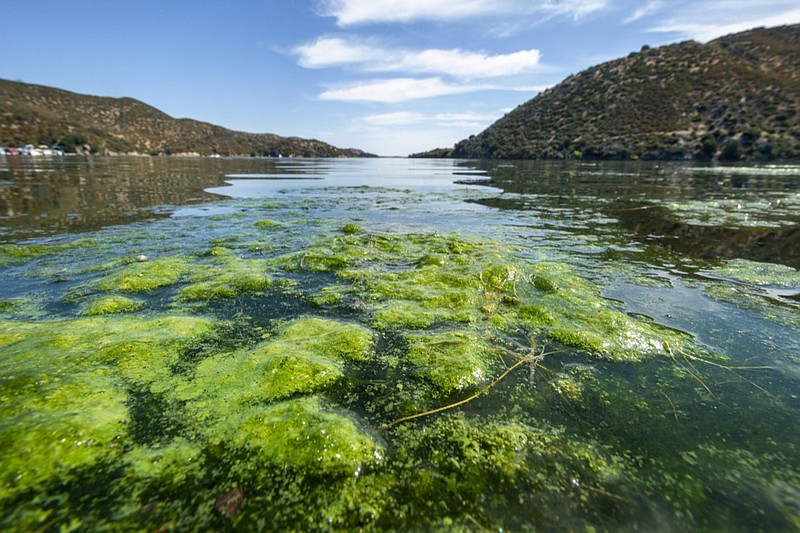Tennessee dog owners who fear their pooches may be the next victims of algae poisoning can find hope in that there have been no such reports in the Volunteer State, according to state officials.
Blue-green algae - formed by potentially toxic, microscopic organisms called cyanobacteria - gained national attention in recent weeks due to several viral online posts about pets who died after swimming in freshwater lakes and ponds.
As of Tuesday afternoon, there were no reports of cyanobacteria affecting animals in the state, nor is the Tennessee Department of Environment and Conservation - which oversees such issues - aware of any toxic algal blooms. Several state and federal agencies, including TDEC, have established an interagency workgroup with the goal of evaluating predictive indicators and developing a unified response to algal blooms should one be needed, according to department spokeswoman Kim Schofinski.
But while there have been no reported cases in Tennessee, a couple from Marietta, Georgia, said their dog, Arya, died Saturday after swimming in Lake Allatoona, about 100 miles southeast of Chattanooga, according to the Atlanta Journal-Constitution. The animal became ill and died from what a veterinarian said was "most likely" an algal toxin.
Experts say dog owners should take precautions. Although the algae can harm people, dogs are more susceptible since they often drink from natural water sources and ingest it while swimming.
The health threats to animals range from skin rashes to neurological problems. The blooms can release toxins that can cause liver damage, lead to respiratory paralysis or produce other fatal conditions.
Dr. Julie Schildt, a clinical assistant professor who specializes in toxicological emergencies at the University of Tennessee College of Veterinary Medicine, said blue-green algae is common and normally not poisonous, but certain conditions such as high temperatures, low amounts of rainfall and stagnant water can cause it to produce the toxin fatal to dogs who eat or drink it.
"You can't look at the algae and see if it's toxic or not. That's the scary part," she said, adding that there is no easy test to determine if water is tainted. "In a dog that's normal one minute and not minutes later, we always think of a toxin."
The neurological signs can happen "very, very quickly," she said. Signs include staggering, seizing or excessively salivating. Other symptoms of liver failure, such as vomiting, fever and diarrhea, could take 12-24 hours to occur.
Intense blooms have led to swimming bans from lakes in the Pacific Northwest to the entire Mississippi seacoast and to Lake Hopatcong, New Jersey's largest lake. Algal blooms tend to thrive in high temperatures and after heavy rains carry fertilizer runoff and sewage into waterways.
"This time of year is when you have the most numbers of cases and people are out and about with their animals and the conditions are ripe for the cyanobacteria to grow," Val Beasley, a professor of veterinary, wildlife and ecological toxicology sciences at Pennsylvania State University, told the New York Times News Service on Monday.
There's no specific drug or therapy to counteract the toxin. An owner's best bet is to go straight to a veterinarian who can provide supportive care if a dog does show symptoms.
While it may be difficult for dogs who love to swim, Schildt recommends finding other ways to beat the heat and cool dogs down. She suggests pools, garden hoses and air conditioning over a local pond. If your dog does go for a dip, bathe or rinse him off afterward.
"Unfortunately, the only way to truly keep your dog safe is to keep him out of the water," Schildt said.
The New York Times News Service contributed to this report.
Contact Mark Pace with questions, comments, concerns or story tips at mpace@timesfreepress.com or 423-757-6659. Follow him on Twitter @themarkpace and on Facebook at ChattanoogaOutdoorsTFP.
Contact Elizabeth Fite at efite@timesfreepress.com or 423-757-6673.
